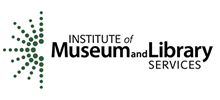Resources
Readings
Library Research Service. (2005). Research and statistics about libraries, [webpage of Colorado Department of Education]. Retrieved August 11, 2005, from http://www.lrs.org/
This resource provides social and economic statistics, data about libraries and communities, information about research methods, and tools for statistical analysis. Designed primarily for library planning, it also provides baselines against which outcomes can be measured for indicators appropriate to many library and museum educational programs.
Nelson, S. (2001). The new planning for results: a streamlined approach. Chicago: American Library Association.
This publication is a core resource for assisting public librarians to envision, evaluate, and respond to community needs with programs and services. It includes an information-gathering toolkit, information on planning tasks, and directions how to apply outcomes based evaluation in rapidly changing library environments.
Taylor-Power, E., Steele, S. & Douglah, M. (2005). Planning a program evaluation, [webpage of University of Wisconsin-Extension]. Retrieved Aug. 11, 2005, from http://www.uwex.edu/ces/pdande/
This is an excellent suite of text-based resources for program development and evaluation that provides individuals a “what I want to know, when I need to know” approach. While cases are drawn from the community service context, it provides useful examples of reports, sampling protocols, and other elements of a genuinely comprehensive all-text “toolkit”.
Organizations
Institute of Museum and Library Services. (2005). NLG [National Leadership Grant] project planning: a tutorial. Retrieved August 11, 2005, from http://e-services.imls.gov/project_planning/
Although this is a recommended tutorial for organizations applying for IMLS National Leadership Grants, it is useful for many types of program planning. In four sections the tutorial covers defining and planning projects, writing the grant, and doing the project.
National Endowment for the Arts: “Lessons Learned: A Planning Toolsite”
www.nea.gov/resources/lessons/index.html
One of NEA’s resources developed for arts organizations, this “Toolsite” is a collection of essays and resources to assist with planning and program development. Doesn’t deal much with evaluation or outcomes.
Partnership for a Nation of Learners - http://www.partnershipforlearners.org/
This web site, supported by IMLS and the Corporation for Public Broadcasting, helps partners work together in the community. It includes case studies, exercises, and tools, as well as information about training events and sources of project funding
University of Kansas. (2005). Community toolbox. Retrieved August 18, 2005, from http://ctb.ku.edu
The Community Toolbox’s primary audience is public health practitioners, but it has over 6,000 web-pages to facilitate in skill building, planning, problem solving, and a wide variety of logic model examples.




